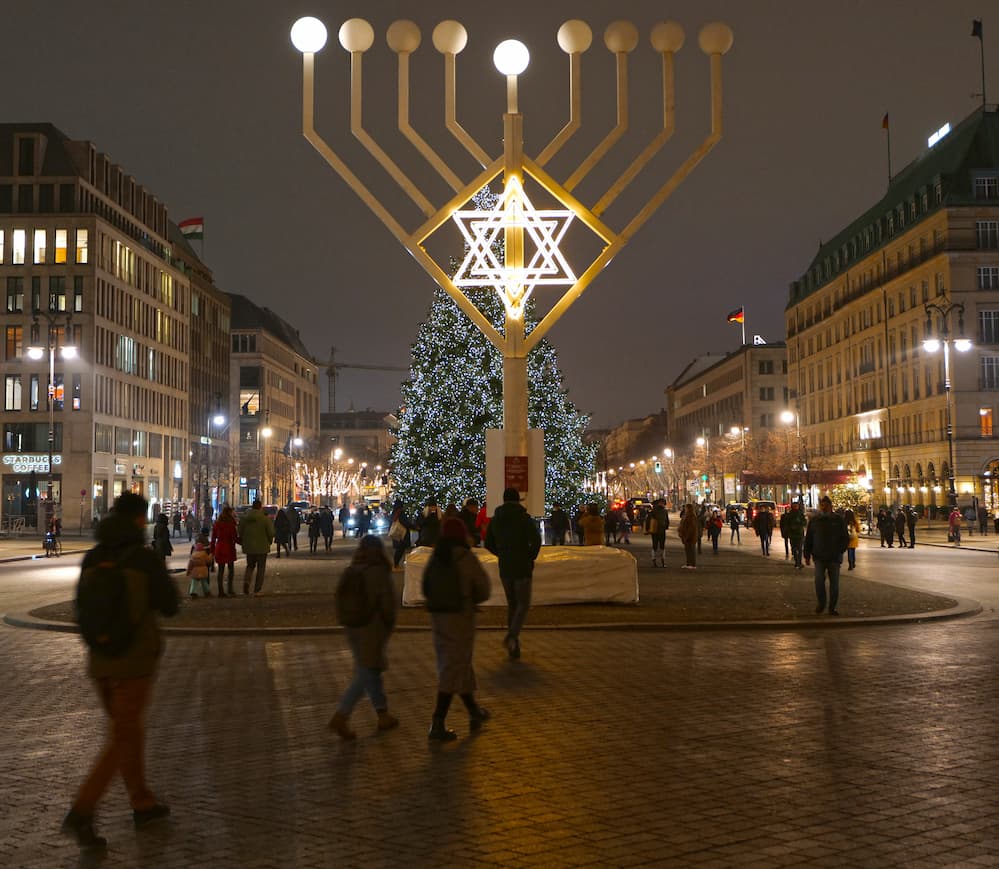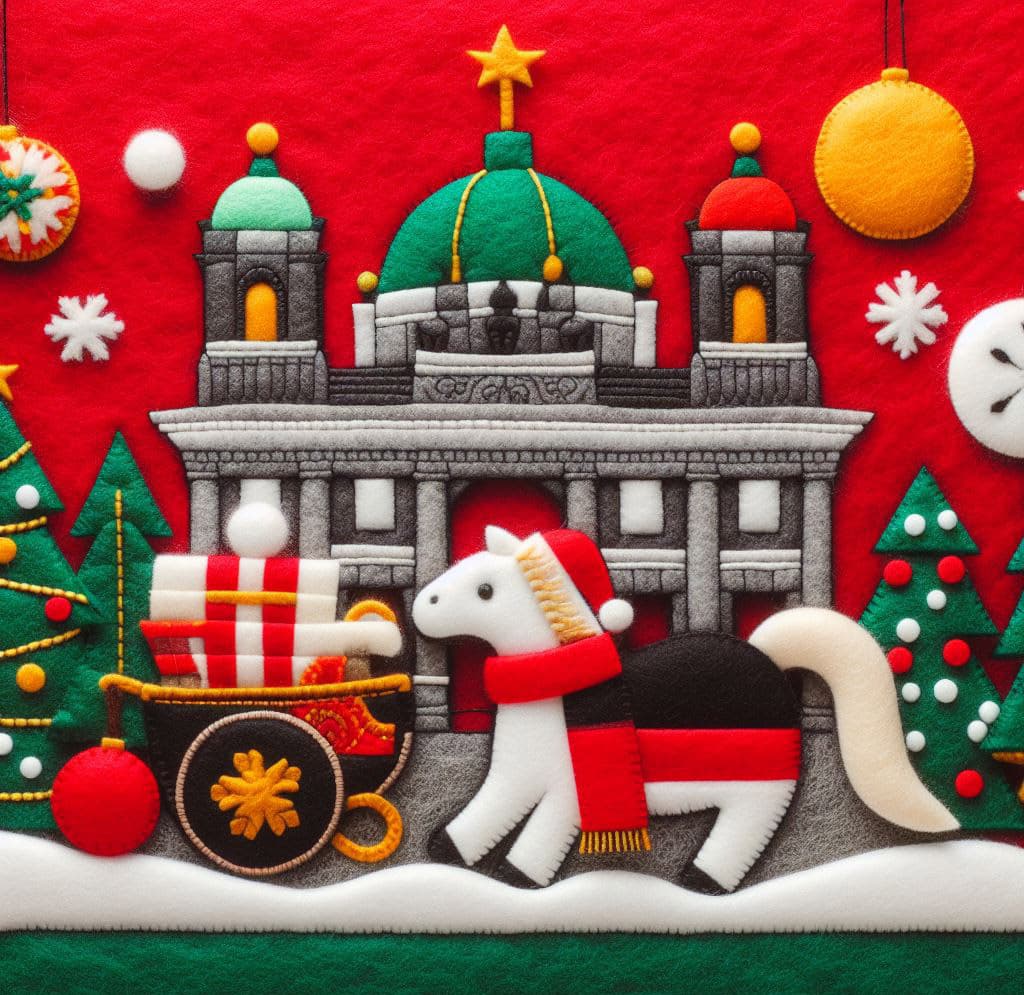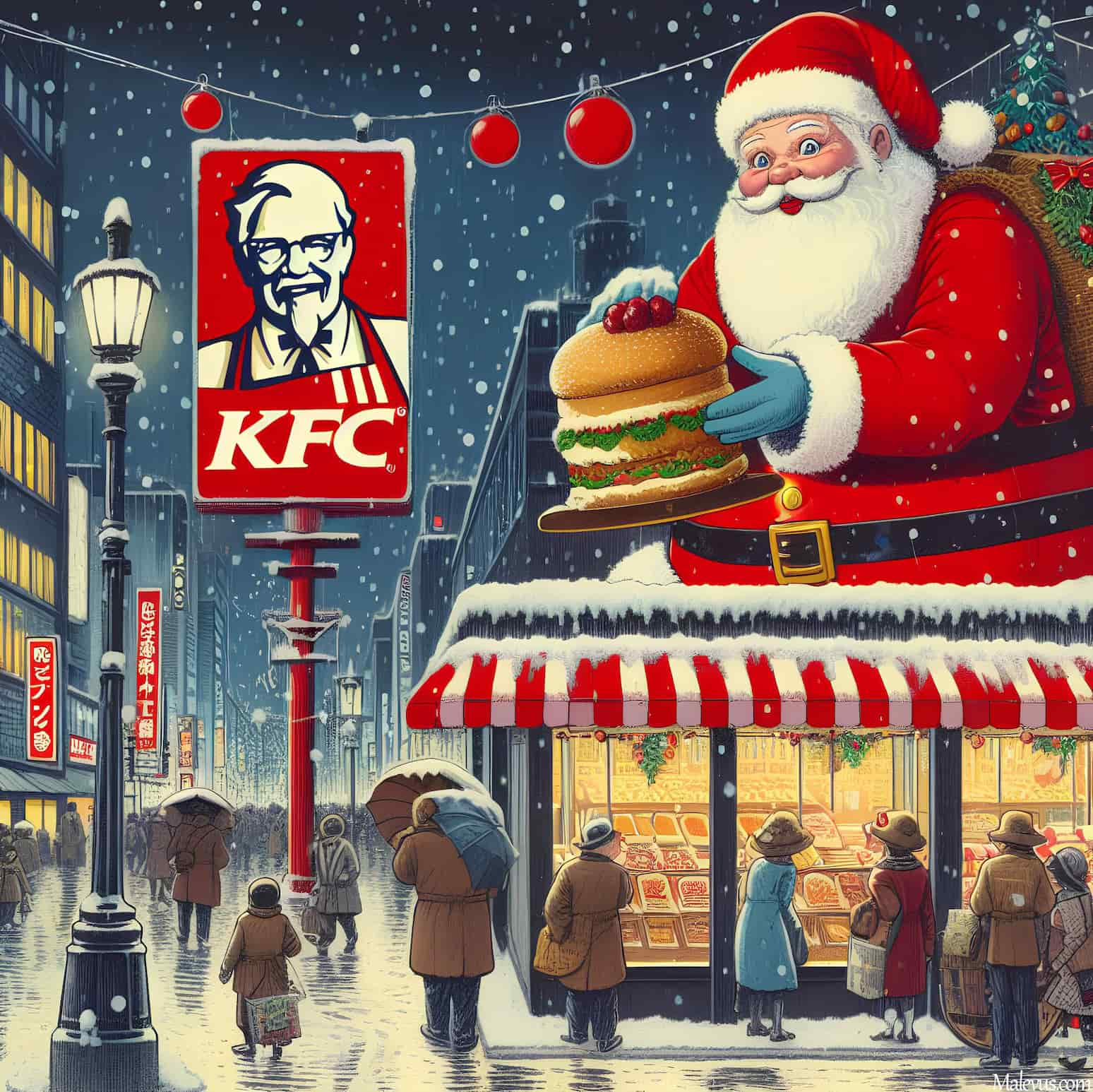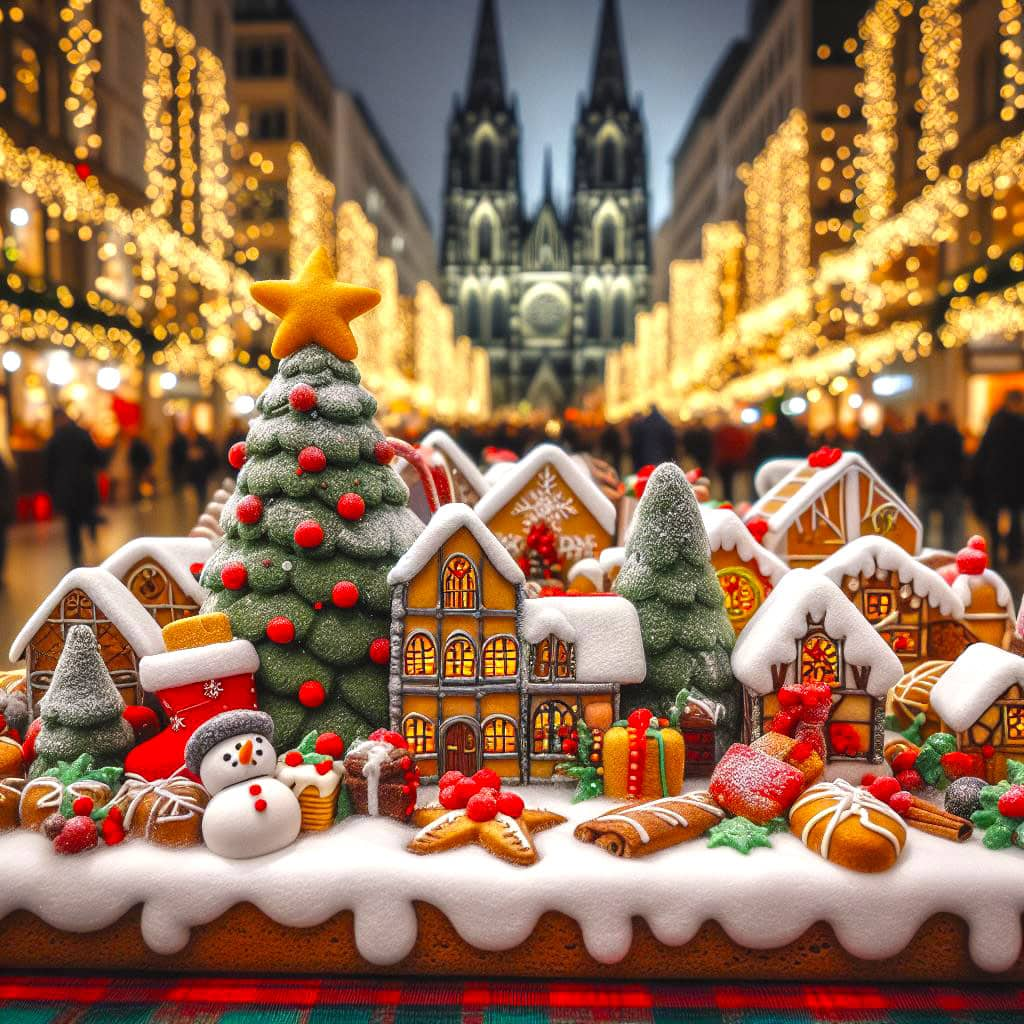Berlin undergoes a seasonal transformation into a snowy landscape during Christmas. The city is adorned with lights and hosts various festive events. Across the city, the well-known German Christmas markets (Christkindlmarkt) offer handmade goods, traditional German cuisine, and festive drinks, a tradition rooted in the Middle Ages. The city’s nightlife experiences increased activity during Christmas. You can engage in the Christmas (Erster Feiertag in German) mood by enjoying traditional German meals and beverages.
Christmas Traditions in Berlin

Potato Salad with Sausages on Christmas Eve
The traditional Christmas Eve supper menu in Berlin features potato salad and sausages, a custom observed on December 24th. This tradition has historical roots dating back to the post-war era, when the availability of food, even for Christmas dinner, was limited.
Christkindlmarkt (Christmas Markets)
A visit to one of Berlin’s Christmas markets during the holiday season is a solid choice. Germans have been organizing these markets since the Middle Ages. The diverse array of merchants offering traditional Berliner cuisine and festive drinks might enhance your experience. Nuremberg Christkindlesmarkt, often known as “the little city of wood and cloth,” is one of the world’s most renowned and long-running Christmas markets. It takes place annually on Nuremberg’s Main Market Square.

Krampus Nacht (Krampus Night)
In certain regions of Germany, individuals wear masks and costumes on Krampus Night as a protective measure against malevolent spirits. While this tradition is not widely observed in Berlin, it is still a part of several local festivals. This occasion is sometimes known as “Krampus Parade Berlin,” and it’s attended by hundreds of people.
Sankt Nikolaus Tag (St. Nicholas Day)
For many Berliner children, the favorite holiday is St. Nicholas Day, observed on December 6th. On the evening of December 5th, the children prepared their boots for St. Nicholas instead of Santa Claus, hoping to find them filled with sweets and gifts. After preparing, they polish their boots and place them outside.

Adventskalender (Advent Calendar)
Germans have a fondness for advent calendars, featuring 24 windows that reveal small gifts or activities for each day leading up to Christmas. As the holiday season approaches, numerous families in Berlin anticipate and enjoy this traditional ritual. Many calendars made of wood or paper start on December 1, as the First Sunday of Advent may be any day between November 27 and December 3.
Kurfürstendamm’s Christmas Lights
From late November to early January, fairy lights decorate the tree-lined avenue known as Ku’damm (or Kurfürstendamm). The broad expanse of pavement in the middle of the road becomes a focal point during the winter months, featuring giant snowmen, Christmas trees, Santa, and illuminated reindeer, all part of the festive display. Kurfürstendamm Avenue once twinkled with 140,000 LED lights strung across 600 trees.

Ice Skating
Engaging in ice skating to Christmas tunes on an ice rink is a popular activity for a winter vacation in Berlin. Skating provides an opportunity to showcase your skills with friends or a special someone in a lighthearted setting. One popular destination in Berlin is the Eisschnelllaufhalle im Sportforum.
“Holy Eve” on December 24
In contrast to Christmas celebrations in the United States, Germany’s most significant holiday is Holy Eve, which occurs on December 24. German parents decorate their Christmas trees discreetly (some even use Christmas pickles), ensuring that the children do not get a glimpse of the lit decorations until this evening. Numerous people participate in a Christmas liturgy, and the exchange of gifts is a customary practice.
Places to Visit in Berlin at Christmas
As the holiday season approaches, Berlin undergoes a transformation, offering festive attractions and festivities. When visiting Berlin during Christmas, consider seeing:
- Brandenburg Gate: During the winter holidays, visitors flock to see the Brandenburg Gate—an iconic landmark—decked up in festive décor and decorated with a massive Christmas tree placed in front of it.
- Berlin Cathedral: At Christmastime, the old Berlin Cathedral becomes a sight worth seeing with its elaborate lights and ornaments.
- Museum Island: Museum Island is a popular spot for both Berliners. Christmas lights and other decorations decorate the island and its cultural significance stems from its historical role in the formation of a certain architectural style. Pergamon and the Old National Gallery are two of the five museums that make up Museum Island.
- Potsdamer Platz: Boasting various traditional crafts, foods, and beverages, this lively area houses one of Berlin’s biggest Christmas markets. The old buildings in the area are another attraction, especially during the holiday season when they are decorated with twinkling lights.
- KaDeWe: The legendary KaDeWe department store in Berlin is among the biggest in all of Europe. The sixth story is devoted to a food hall that will wow you.
- The Mall of Berlin: It is a popular spot for Christmas shopping because of its festive decorations and bargains. It was first opened in September 2014.
- Berlin Christmas Garden: In the midst of Christmas, many go to Berlin’s Christmas Garden for a leisurely walk, a festive supper, or both.
- Christmas at the Zoo: Tierpark Zoo, located in Berlin’s eastern district, is turned into a magical spot for one special Christmas event.
Traditional Christmas Foods in Berlin
During the Christmas season, it’s mostly these delicacies that symbolize Berlin’s rich culinary legacy.
- Kartoffelsalat mit Würstchen: Often known as “German potato salad with sausage”, it is the most beloved Berliner Christmas meal, according to a recent study. For the best results, make the potato salad the day before, on the 23rd, and serve it that evening. Just cook the sausage up that night.
- Fish Dishes: On the 24th, most Germans would rather not eat meat since they are Catholics and go to midnight mass. As a result, seafood dishes end up in the middle of the table. You may usually find fish like carp, herring, salmon, or hake on a Berliner’s table.
- Poultry: It’s not uncommon for Berliners to enjoy sausage at a Christmas celebration, and eating fowl like turkey or geese has also grown in popularity.
- Cheese Fondue or Raclette: A more sedate dining experience with cheese fondue or raclette, served with an assortment of breads, meats, and vegetables, is also making its way into certain regions of Berlin.
- Side Dishes: As a side dish, you could find Kartoffelpuffer in Berlin, a kind of potato fritter, or special German dumplings called Serviettenknödel. You may also add sauerkraut, red cabbage, or kale to the mix.
History of Christmas in Berlin
Similar to the rest of Germany, Christmas in Berlin is a huge celebration. When Christianity was brought to the country about 300 AD by the Roman Empire, the celebration of Christmas in Germany began. It wasn’t until the 19th century that many of the so-called “traditional” Christmas customs emerged. Germans began decorating Christmas trees in the 19th century when widespread access to large-scale fir and spruce plantations made the practice more affordable. This is one unique German custom that has become popular all across the globe.






